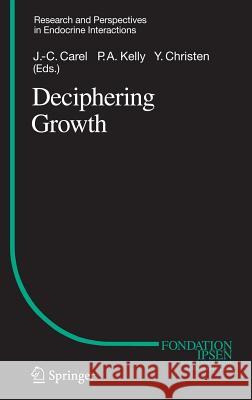Deciphering Growth » książka
Deciphering Growth
ISBN-13: 9783540261926 / Angielski / Twarda / 2005 / 155 str.
In mammals, the major factors involved in the regulation of body growth are known: insulin-like growth factors (IGF) are key regulators of somatic growth. Growth hormone (GH), secreted by the pituitary gland, directly regulates circulating levels of IGF-I, which is the major coordinator of spatio-temporal growth of the organism. In humans, growth is even more complex, involving a number of specific characteristics not found in other species. These include rapid intrauterine growth, deceleration just after birth, a mid-childhood growth spurt, a second deceleration before puberty, an adolescent growth spurt, and finally full statural growth, which is seen somewhat later. The combined knowledge concerning the endocrine and paracrine aspects of growth have led to the introduction of treatment regimens, most effective in GH-deficient children. However, size depends on the combination of a number of genetic factors, and there remain several aspects of this complex process still poorly understood.











